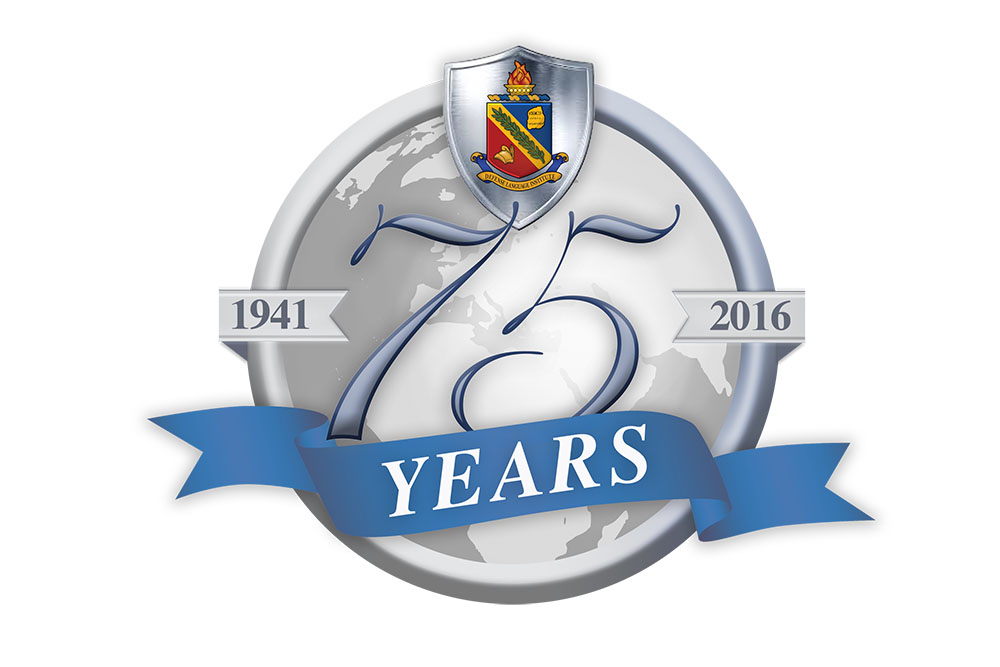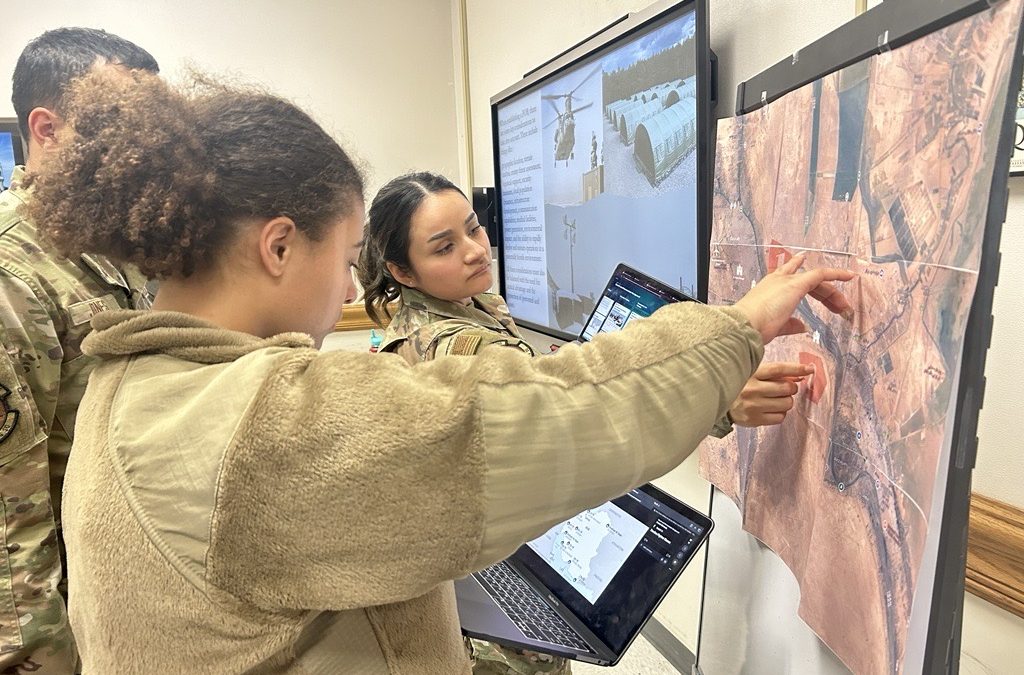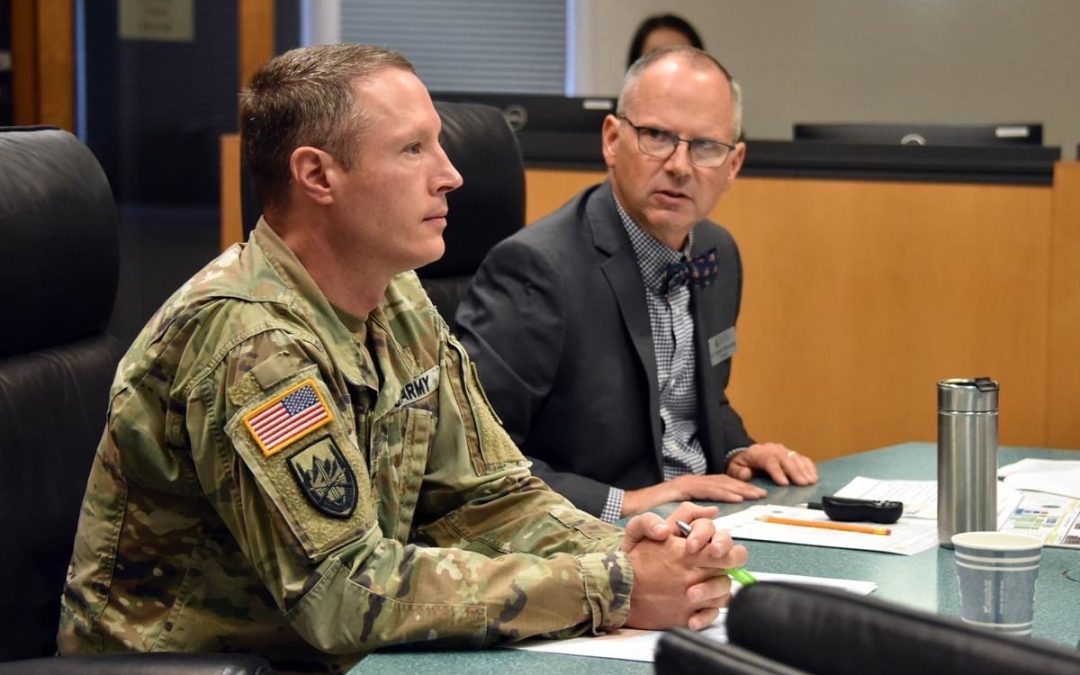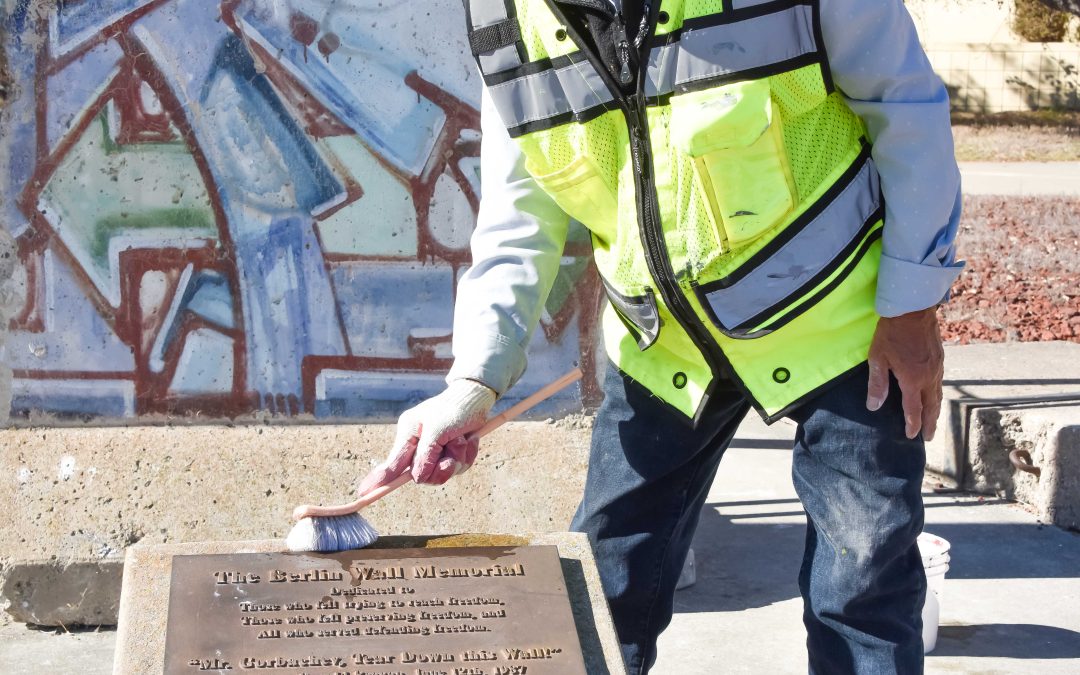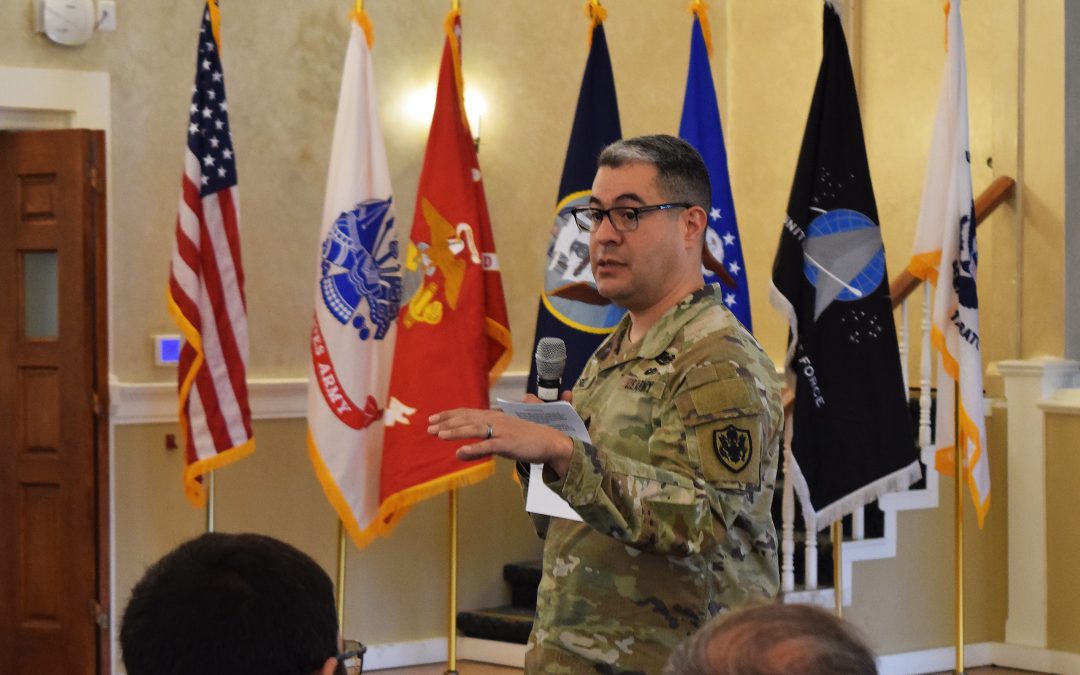By Patrick Bray
DLIFLC Public Affairs
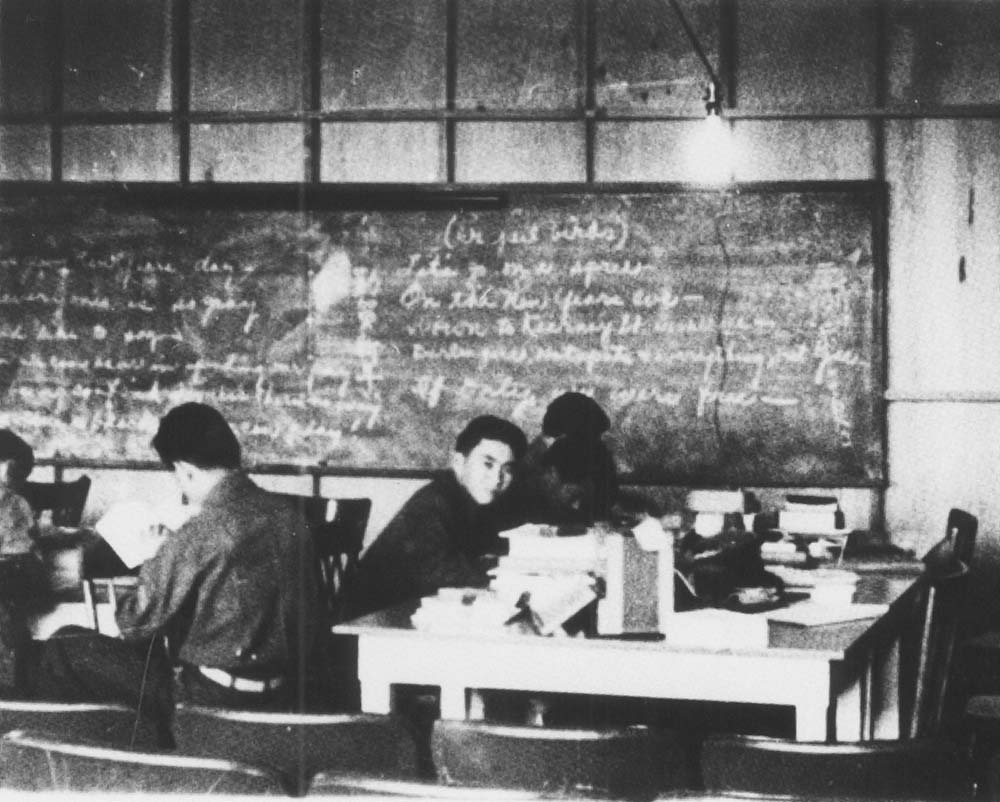
The first students to attend the secret 4th Army Intelligence School in November 1941 were mostly American-born Japanese young men who joined the Army to become military intelligence analysts. Most of them spoke only “kitchen” Japanese and did not know how to read or write in the language. By the end of the war, more than 6,000 linguists graduated from the secret school and would prove to be the most valuable assets in the battlefield in the Pacific and Europe. The school later became the Army Language School, and then the Defense Language Institute Foreign Language Center, which observes its 75th year of military language training in November 2016. (U.S. Army photo/Released)
MONTEREY, Calif. – The Defense Language Institute Foreign Language Center at the Presidio of Monterey, California, celebrates its 75th anniversary this year as the provider of culturally-based foreign language education, training and sustainment for the Department of Defense going back to 1941.
“Time and time again, the Nation’s leadership – military or civilian – must make informed decisions that rely on insight provided by a professional military linguist somewhere in that decision cycle,” said Col. Phil Deppert, who is the current commandant at the Institute.
“Thankfully, those that preceded us at DLIFLC had the vision, foresight, instinct and agility to transform themselves and the institute to respond to our Nation’s needs.”
A multitude of celebration events are scheduled for early November. The Black Daggers, the official U.S. Army Special Operations Command parachute demonstration team, will jump into Soldier Field at the Presidio for the Hall of Fame induction ceremony Nov. 4.
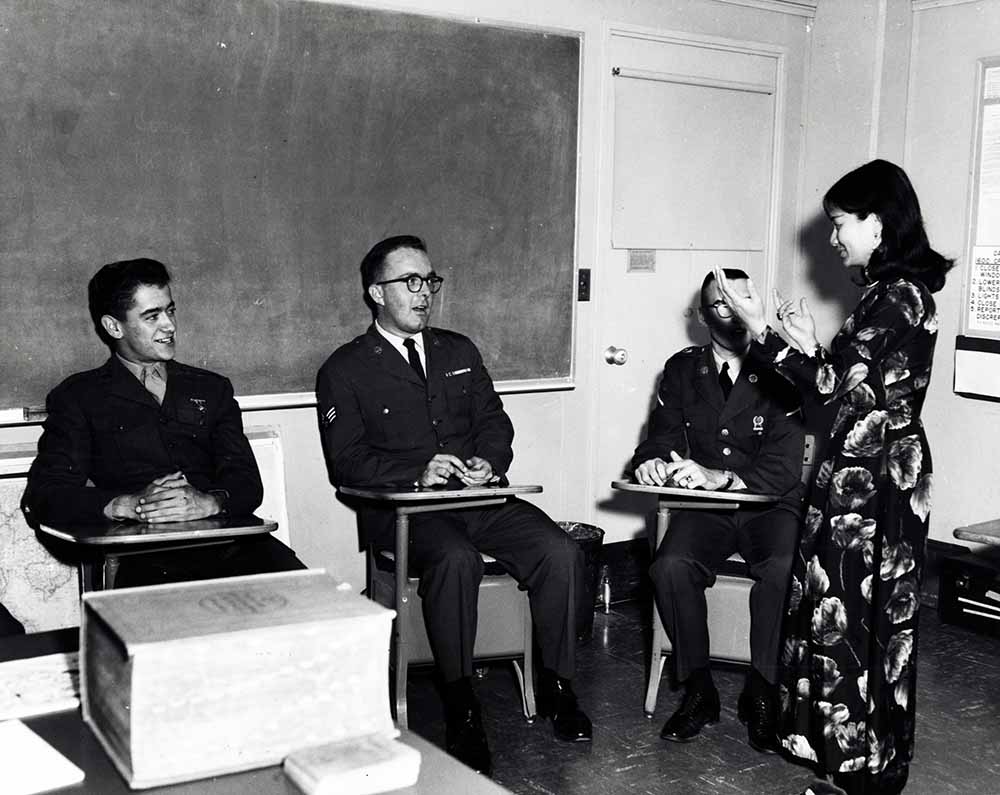
A Vietnamese class of eight students listen to their instructor at the Defense Language Institute West Coast, Presidio of Monterey, California, in 1965. The school later became the Defense Language Institute Foreign Language Center, which observes its 75th year of military language training in November 2016. (U.S. Army photo/Released)
“This is actually a dream. I get to go back not only as a member of the Special Operations Command but as a linguist representing the Army,” said Master Sgt. Sunnydale Hyde, a DLIFLC graduate and member of the Black Daggers.
The Hall of Fame induction ceremony will take place to honor those persons who have contributed significantly to language training, use thereof, or policy contributions within DOD. The following day, Nov. 5, an anniversary ball will take place to celebrate the extraordinary efforts of its students, instructors, staff and alumni throughout the years.
The Institute’s roots were established on the eve of World War II. Considering the strained relations between Japan and the U.S., a small group of officers with previous tours of duty in Japan recognized the need for an intelligence unit, which would be able to understand the Japanese language.
With this intent, 75 years ago in November 1941, this group of officers started a small school in an abandoned airplane hangar at the Presidio of San Francisco. That school would grow over time to become the Defense Language Institute Foreign Language Center.
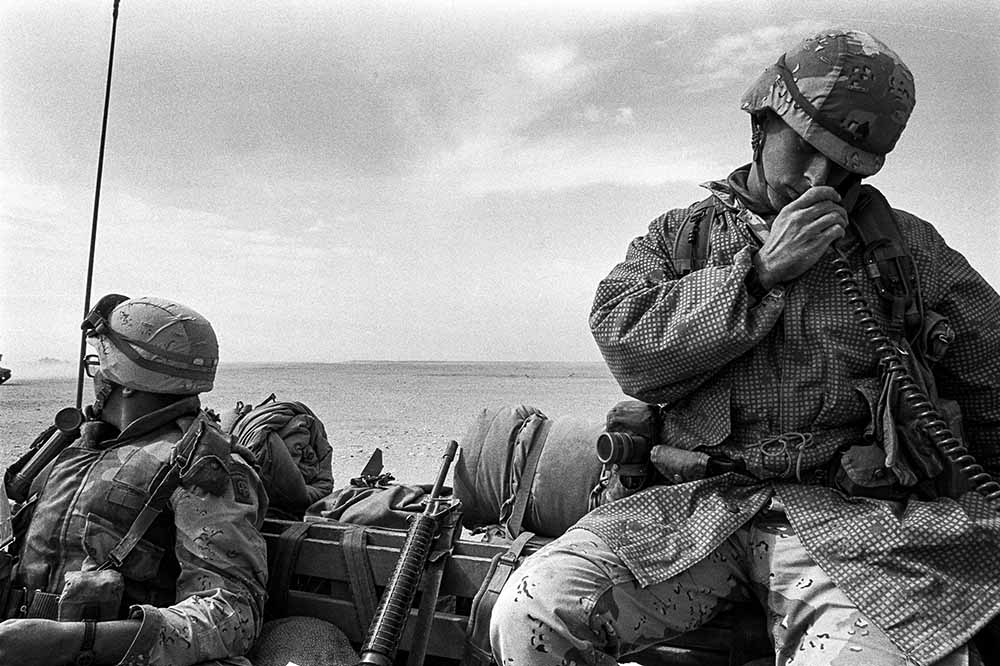
Members of the 313th Military Intelligence Battalion, 82nd Airborne Division intercept enemy radio communications, passing the intelligence along to an analysis cell, during the 1990-1991 Gulf War. These soldiers are Defense Language Institute Foreign Language Center-trained linguists assigned to the Collection and Jamming Platoon of Bravo Company. The Army managed, joint-service institution observes its 75th year of military language training in November 2016. (Courtesy photo by Jason Auld)
“Men and women from all corners of the war-torn world answered the call to build a unique language academy in Monterey encompassing all the major languages of the world,” said Dr. James McNaughton, DLIFLC command historian in October 1989, about the buildup of the Institute’s language programs in the post-World War II years.
Through the years the name has changed numerous times. Beginning as the 4th Army Intelligence School, the name changed to the Military Intelligence Service Language School. When the school relocated to Monterey it became the Army Language School. Finally, it became the Defense Language Institute in 1963. This name change consolidated the Army, Navy, and Air Force language programs into a single, integrated system managed by the Army.
However, the mission has always remained the same: to provide critical language training at the point and time of need. This was evidenced as the U.S increased the number of troops hitting the ground in Vietnam. During the war, some 20,000 personnel studied Vietnamese at DLIFLC. Again, at the start of the Gulf War, the Institute was praised for its quick responsiveness to requests from the field for Iraqi dialect training and materials.
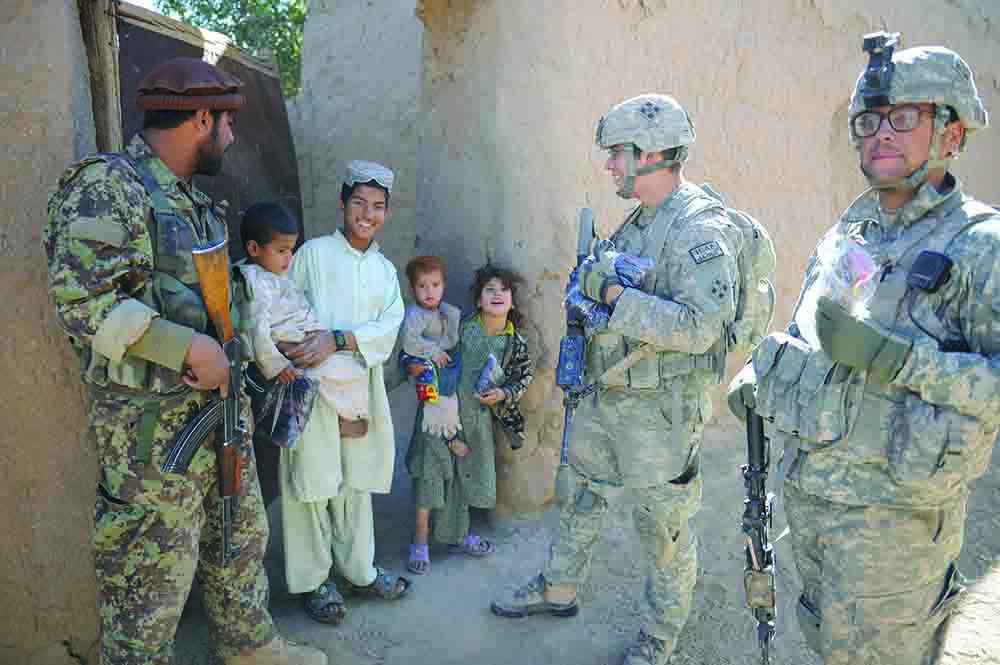
Spc. Kevin Chalkley, a U.S. Army Soldier in Afghanistan, speaks to children using Dari that he learned at a seven week class taught by the Defense Language Institute Foreign Language Center at Fort Carson, Colorado, in 2010. The Army managed, joint-service institution observes its 75th year of military language training in November 2016. (U.S. Army photo by Brian Lamar/Released)
“On the first day of the ground invasion, our troops entered Iraq unopposed as thousands of Iraqi conscript soldiers simply surrendered. I think we saved countless lives that way,” said Sgt. Maj. James Southern, provost Sergeant Major at the Institute. Southern served as an Arabic linguist in the Gulf War and he and other linguists convinced Iraqi conscripts to allow U.S. troops to pass into Iraq.
Today, DLIFLC continues to support the joint force worldwide and the greater DOD community with its language needs. Resident instruction is provided in 23 languages at the Presidio of Monterey with the capacity to instruct another 65 languages in Washington, D.C., graduating more than 220,000 linguists since 1941. In addition, multiple language training detachments exists at sites in the U.S., Europe, Hawaii and Korea, spanning all the U.S. geographic combatant commands, in support of the total force.
“DLI is about shaping the next generation of not only our service members but our country overall. Those of us who have been around for more than a couple of days realize and understand that if we want our services and our country to sustain itself then we have to give it our time and energy, and focus on shaping the next generation through these service members,” said Deppert.
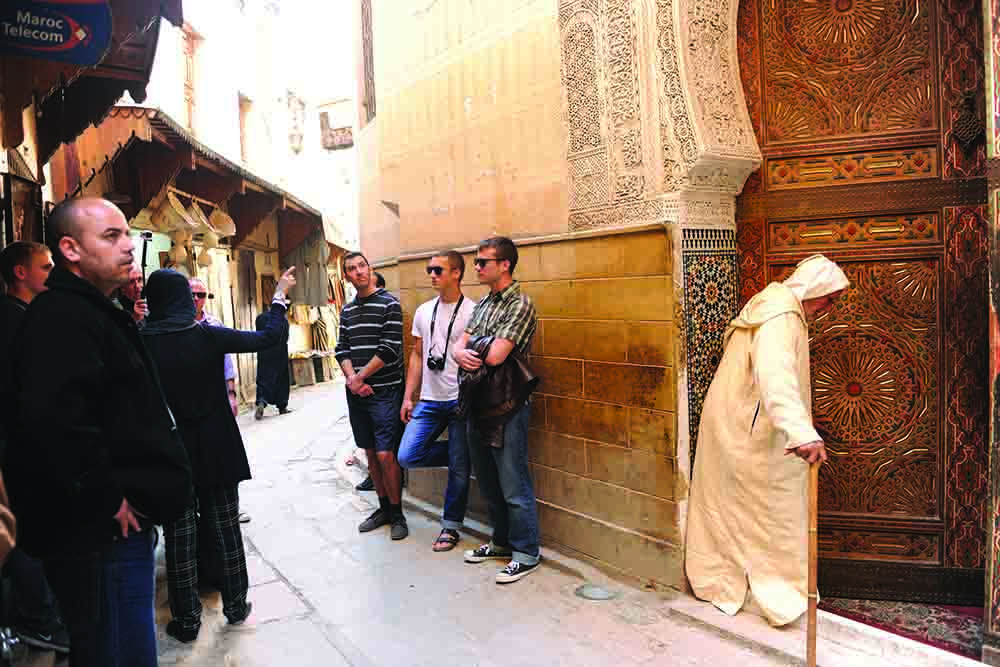
Defense Language Institute Foreign Language Center students traveled to the Moroccan city of Fes on a one-day tour to learn about the historic value of the city and its exquisite landmarks in April 2015. The Institute recognizes the value that immersion opportunities bring to language learning. The Army managed, joint-service institution observes its 75th year of military language training in November 2016. (U.S. Army photo by Natela Cutter)
Read more 75th Anniversary stories:
75th Anniversary Globe magazine
DLIFLC announces Hall of Fame nominations
Alumnus makes final parachute jump in 75th anniversary demonstration event
75th Anniversary Special: The Nisei legacy
75th Anniversary Special: The Savage and Snelling years

